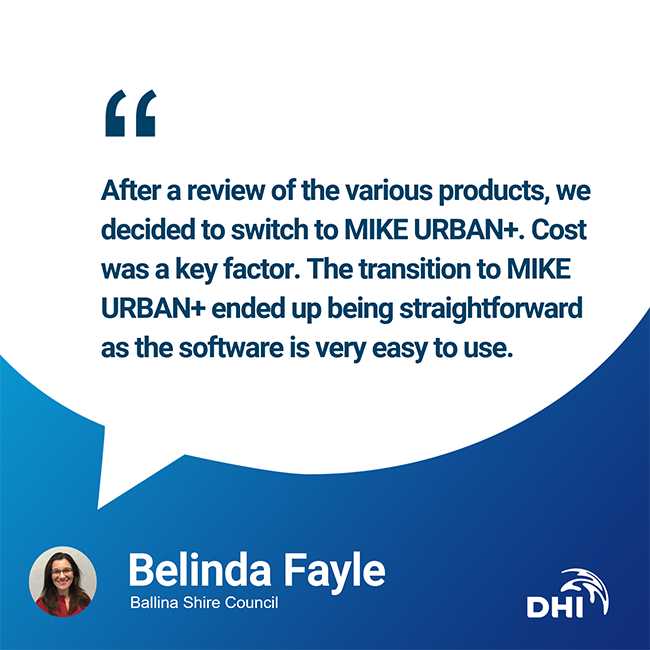
Q. Tell me more about your experience in the water and wastewater industry?
A. I’ve worked in the water and wastewater industry for over 20 years, with the last 15 being in local government. Most of my experience has been in operation and maintenance of storages, treatment plants and pump stations.
Q. How long have you been using numerical water modelling software?
A. I’ve used hydraulic modelling software sporadically over my career however I’ve been using it a lot more intensively since I joined Ballina Shire Council in a strategic role two years ago and now do all of the hydraulic modelling work at Council.
Q. Why did Ballina Shire Council decide to switch to MIKE URBAN+ for its water distribution and wastewater network modelling?
A. We did a review of the various products on the market and decided to switch to MIKE URBAN+ for a number of reasons. Cost was a key factor, with the total cost of ownership of MIKE URBAN+ much lower than our existing water and wastewater network modelling software. In addition, we really liked the modern user interface as it is easy to use and speeds up the model building process. The other key benefit was that it has a single user interface for both water distribution and wastewater network modelling.
Q. How was the transition from your previous network modelling packages to MIKE URBAN+? Was it a difficult transition?
A. We were a little bit concerned about the transition process to be honest, however we were reassured by the local client support manager and the conversion to MIKE URBAN + turned out to be a relatively simple process. There were a few minor issues caused by the differences with our previous modelling package however DHI resolved these quickly, so we were up and running in no time at all. For our simple models I found it was easy enough for me to do the conversions, however for our more complex networks I took advantage of DHI’s expertise and got them to convert our existing network models to MIKE URBAN+ which they will do at no cost.
Q. What about actually using the software? Was the transition to the new software difficult?
A. The transition to MIKE URBAN+ ended up being pretty straightforward as the software is well set out and very easy to use. I did a 2-day training course for each of the collection systems and water distribution modules in order to get back up to speed with hydraulic modelling and become familiar with the new user interface. The training was very good and it helped us to accelerate the transition. I note that DHI also now offers free and instructor led training online for MIKE URBAN+.
Q. Now that you have been a DHI customer for a while, what has the experience been like?
A. Whilst the software has been extremely good, what we have found to be the most positive aspect has been the excellent local technical support. DHI’s local support is provided by water and sewerage engineers with significant real-world network planning experience. They have happily gone above and beyond to support us, and their expert guidance has been invaluable.
Q. Where to from here?
A. I note that MIKE URBAN+ can also be utilised for stormwater modelling, and I understand that it is currently being extended to include river and flood modelling in a future version. I think that potential use of MIKE URBAN+ for these other functions is something that Ballina Shire Council could investigate.
Note: As of the 16th of November 2020, MIKE URBAN+ will be renamed MIKE+ as the platform continues to expand to supersede MIKE FLOOD and eventually MIKE HYDRO River.
